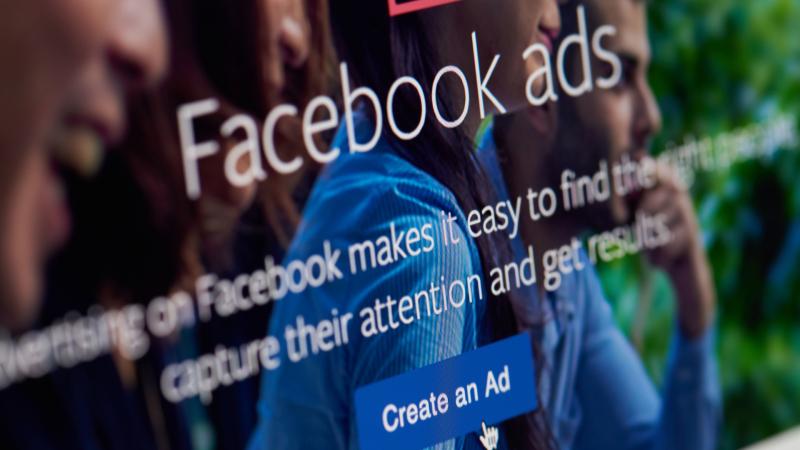Given the amount of demographic data available about Facebook users, there’s an immense opportunity to build landing pages that target them by groups and affinities. One set of landing pages might be aimed at Gen Xers while another set can be targeted toward Millennials.
In this same line of thought, you should also be building second landing pages that are intended to retarget folks who’ve only visited your site once. You can then use Facebook ads as a nudge to come back to the brand and re-engage.
This approach also offers you a chance to perform A/B testing. If you’re seeing a high rate of failure to convert customers on the first visit, you can see what pages drive the most traffic. By tracking which combinations of ads and landing pages work best, you’ll be able to quickly streamline your efforts.
Amazon Products
One way to retarget more efficiently with customers who’ve proven difficult to convert on your specific site is the use of Amazon product pages. If your company has built a presence on Amazon, you can link to pages for your products. Instead of targeting a return to your site, you can focus on driving the customer there.
Cart Abandonment
One of the biggest challenges in internet sales is getting folks who’ve abandoned carts to resume their purchases. By storing carts in your database, you can identify customers who’ve exited the process and offer ads on Facebook.
If you’d like to make an added push, you can offer a sweetener. For example, Nespresso’s Facebook ads often offer free delivery to customers who return to their carts.
Retargeting Based on Interest
Specific demonstrations of interest are often good indicators to work from when deciding which users to retarget. For example, a site could focus its energies on sending ads to visitors who watched more than half of a specific video.
On-site time is also a good indicator to track. You can then send Facebook ads to folks who have a strong enough interest in your products or services to be considered good candidates for conversion.
Indirect Retargeting
Sometimes it helps to reinforce interest by way of a degree of social proof. Rather than immediately directing potential customers straight back to your product pages, it may be easier to direct them toward a different site that provides favorable information.
Encouraging them to check out product reviews is an excellent way to stoke renewed interest. You also can point them toward related videos and other content that cast your products in a favorable light.
Most Active Users
In some cases, remarketing isn’t about pounding away at customers who’ve left the process. Sometimes it’s worthwhile to reinforce established relationships with existing customers.
A blog that has seen a lot of traffic from a specific visitor might want to offer up an ad just to reinforce brand presence. This is also a good strategy for companies that sell a lot of consumables, such as printer ink.
Seasonal Campaigns
Thanks to the detailed profile that Facebook offers of each user, you can focus on retargeting based on seasonal behaviors. For example, a site selling apparel might want to offer up ads with winter fashions to a user who completed a purchase back in the spring.
Ads can also be used as reminders for folks who need to handle seasonal issues, such as car owners who can be retargeted for the purchase of winter tires.
App Users
Integrate your own app with Facebook Analytics can yield good results. If you’d like to bring back a user who hasn’t been active in a while, a retargeted ad on Facebook may just do the trick.
Previous Buyers
Proven purchasers are worth their weight in gold. With a diverse dataset at hand, you can use your own information about products purchased by a user to engage in retargeting. Someone who bought PC game from a site recently may be a good candidate to retarget with products ads for better video cards.
Be Specific
One mistake that many Facebook advertisers make is simply retargeting previous website visitors. You should be serious in your efforts to leverage the platform. Not all potential customers are created equal. If you have a site that’s aimed at a younger demographic, it might be wise to go into the Custom Audiences system to select your ads to only retarget visitors in your preferred segment.
Facebook also offers metrics that measure engagement, so you can focus on individuals who’ve shown a clear interest in your brand.
Thanks to the company’s highly targeted algorithms, you can have it automatically tailor ads to unique customers. Playing around with settings will give you a chance to see what works.
With an investment of your own time, you can fine-tune your Facebook retargeting in ways that allow you to outperform your competitors.
Guest Author: Helen Cartwright is a passionate blogger, who excels in the Digital Marketing and Technology niche. When not wired in marketing strategies she ghost-writes for a variety of authors who have their work published on leading online media channels such as The Huffington Post and Entrepreneur.com. You can follow her on Twitter.
